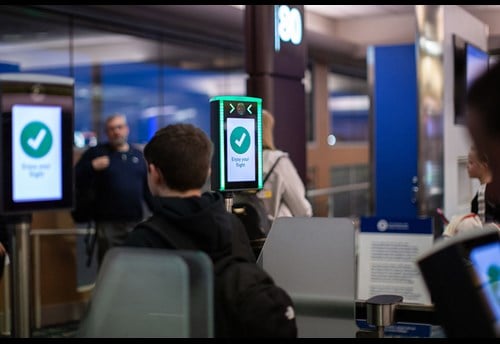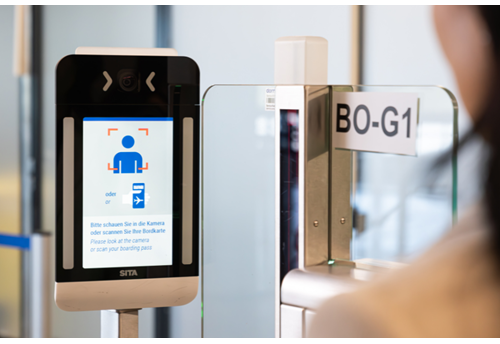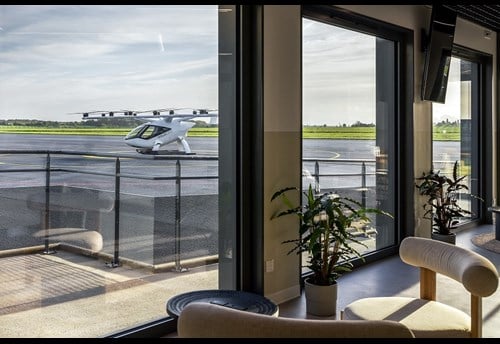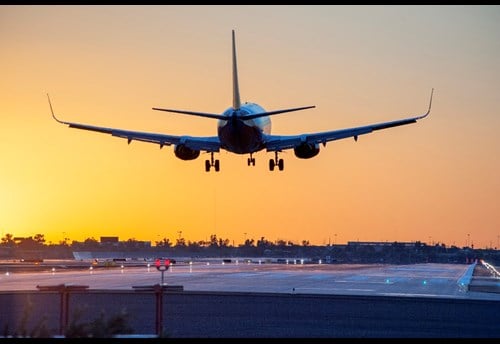Passenger satisfaction is a key indicator of how well airlines and airports are performing. So it’s encouraging that this year’s SITA Air Transport IT Insights report highlights a lot of improvement in the area.
Happier passengers
The report shows that airlines and airports both use ‘passenger satisfaction’ and ‘average processing speed per hour’ to measure passenger processing performance. It reveals a sharp focus on investing in the passenger journey with the industry embracing new technologies to accelerate processes, reduce queues and keep passengers better informed.
It’s good to see the focus clearly paying off, with passengers reaping the rewards, as evidenced by rising satisfaction levels and processing speeds. As many as 60% of airline CIOs confirmed a year-on-year improved satisfaction rate of up to 20%. At the same time, 45% of them cited a 20% improvement in processing speed.
We’re seeing comparable figures for airports: 63% of airport CIOs reported a year-on-year improvement in customer satisfaction up to 20%, along with an increase in processing speeds. Both airlines and airports said they also registered a rise in business performance.
Airlines: a focus on flow
I find it immensely significant that passenger flow investment is a high priority for airlines. Passenger flow interconnects with other points essential to better operational efficiencies, such as streamlined check-in, baggage and boarding processes. These processes are fundamental to a seamless passenger journey.
A hunger for information… at the fingertips of passengers
We know from other SITA surveys that passengers want information at their fingertips. The air transport industry is well aware that keeping passengers up-to-date with travel plans is crucial to customer satisfaction. So it’s no surprise that airlines and airports are investing in sharing more real-time information to improve the passenger journey.
Of course, this information is being pushed to passengers’ mobile devices. Take baggage, for example, which has a big emotional attachment for passengers. Passengers want reassurance that their baggage is on route. To this end, 55% of airlines plan to provide real-time baggage tracking to their passengers by 2022.
The Insights report also identified that 79% of airlines are hoping to implement solutions around mobile electronic capture requirements for pre-boarding. Similarly, 68% of airlines are looking to offer off-airport passenger processing in 2022.
Here, I’d emphasize that airlines and airports in the next three years are looking to provide wait time information in airline apps (74% of airlines) and to passenger mobile devices (54% of airports). This is the next wave of passenger flow management investment.
Tackling wait times
I’m pleased to see that airlines and airports are aligned on improving wait times and keeping passengers informed about them. The vast majority of airports have now deployed ‘wait-time monitoring’ solutions. The trend is strong. In the next three years, 54% of airports will provide wait-time notifications to passengers’ mobile devices. In the same time scale, 74% of airlines plan to embed wait times into their mobile apps.
Enter BI: monitoring progress
Business intelligence (BI) will make it all a reality, by aggregating data and getting journey insights from that data. That’s why it’s high on the boardroom IT agenda as airports and airlines rise to the challenge of more passengers and mandatory security measures. A huge number of airlines (87%) have or plan to have BI operations initiatives for passenger processing in the next three years. This aligns with the 83% of airports who expect to have passenger processing and flow management deployed in the same time frame.
Passengers want more tech
Digital travelers are inextricably linked to their mobile devices. We know that from SITA’s Passenger IT Insights 2019 survey. It shows that the more steps are automated, the higher the rate of satisfaction.
Passengers want more technology and personalized services across their journey with more information to their mobile devices. BI is the enabler, and even though there are many complexities (such as integration and managing multiple stakeholders), the report shows that the industry is serious about conquering the challenges. There’s undoubtedly a pronounced trend towards sharing data to enhance the passenger journey.
To me, this highlights a strong commonality and shared goals between airlines and airports. Their IT investments are already having a very positive impact on the passenger experience. This looks set to continue, and it bodes well for the seamless journey of the future.











0 Comments